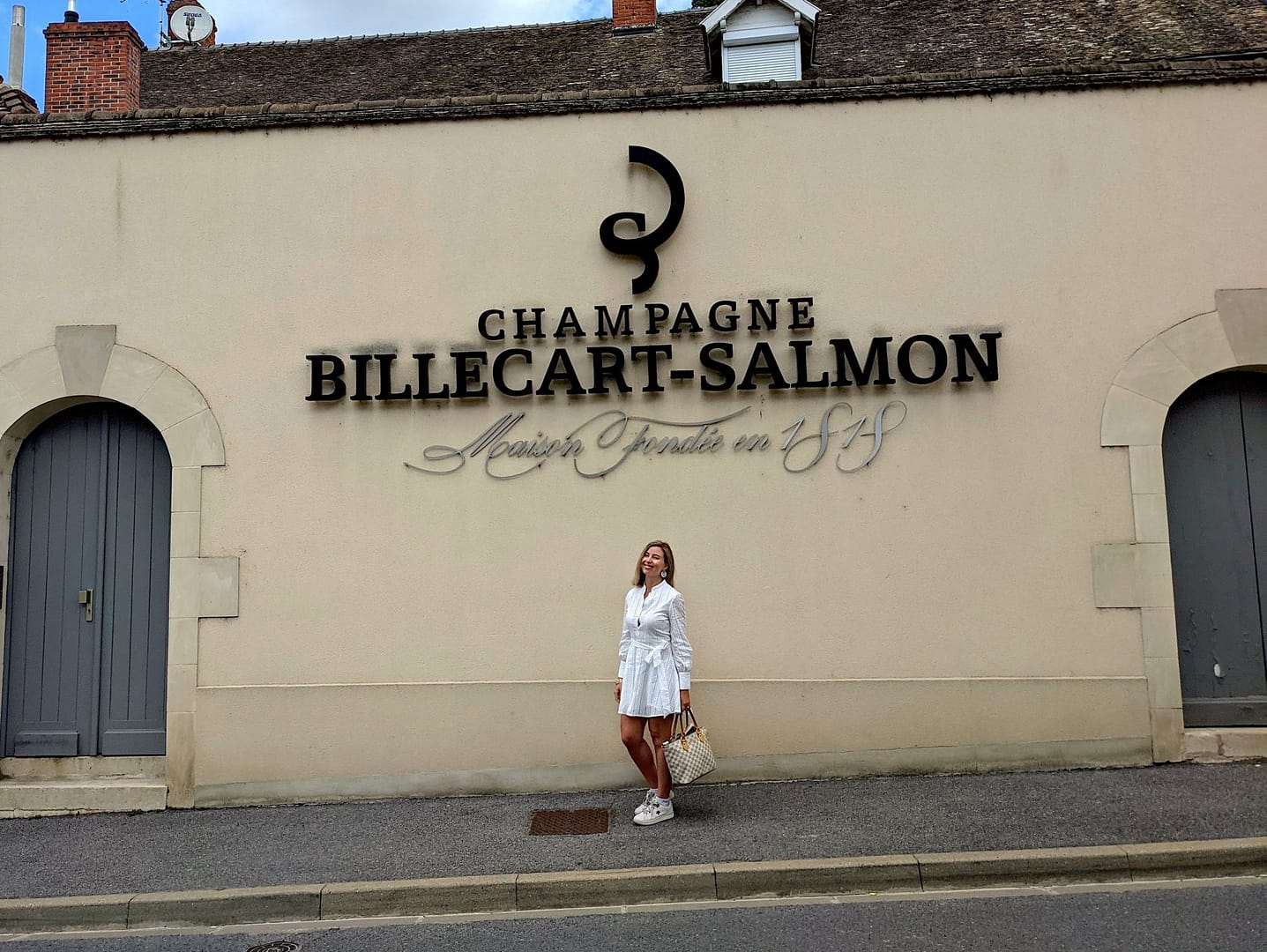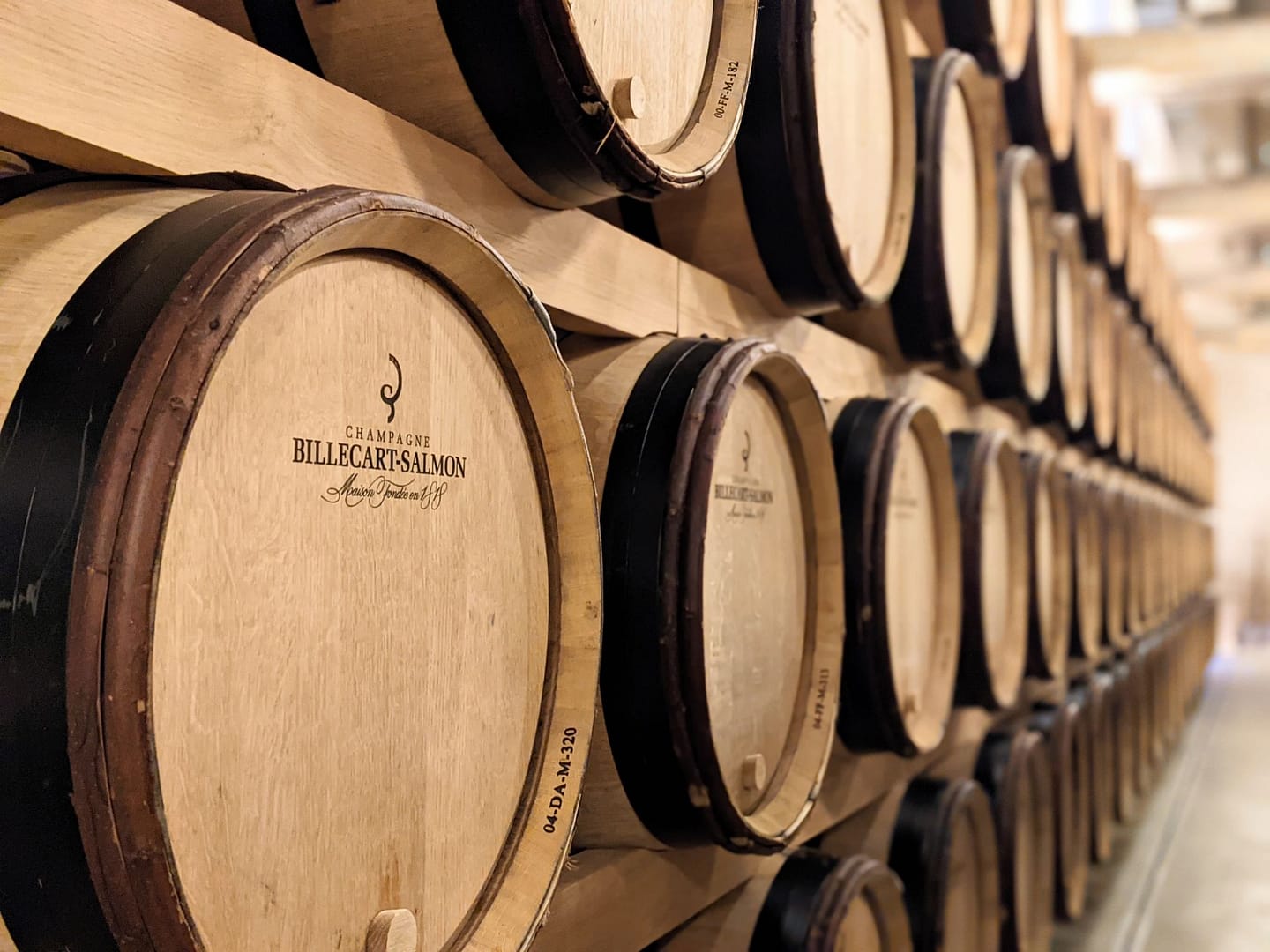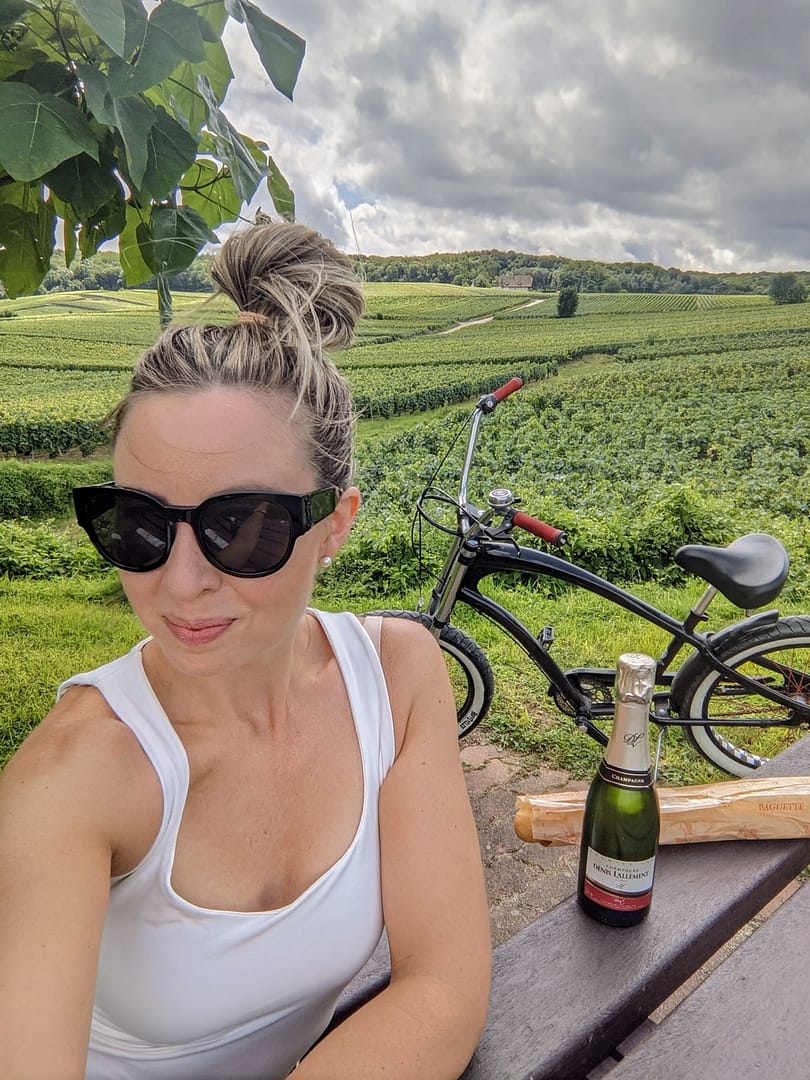
In 1999, champagne specialist Richard Juhlin summoned the world’s most renowned wine experts to Stockholm for what he believed was an extremely important task. For three days, the sommeliers conducted a blind taste test of 150 of the world’s finest cuvées. To what end? Juhlin wanted to determine the absolute best champagne of, not just the decade or the century, but the millennium.
Vintage after vintage, they sampled the most exquisite champagnes. And at the end, the judges tallied the vote – they concluded that the title of “Champagne of the Millennium” should be awarded to the Billecart-Salmon Cuvée Nicolas François Billecart 1959. The second place title went to the Billecart-Salmon Cuvée Nicolas François Billecart 1961.
How was this possible, that the top two spots on the podium could be awarded, via a blind taste test, to the same champagne house? It was clear that Billecart-Salmon had created something truly exquisite.

Visiting the Champagne Region
My third visit to the Champagne region had a very different intention. I’d been to the Avenue of Champagne in Epernay, I had toured the cellars of Veuve and Moët, but like peeling back layers of the onion, I wanted to understand the what set set the most coveted vintages apart from the rest.
This time around, I stayed in the quaint village of Rilly-la-Montagne, a stones throw to many of the region’s lesser known, but highly revered caves. After visiting Champagne Vilmart, Ployez-Jacquemart and a handful of grower-producers, I headed down to Aÿ for one smaller producer which has a cult following among many wine aficionados – the house of Billecart-Salmon.

Billecart-Salmon
I arrived at the House of Billecart-Salmon on a sweltering Friday morning in July. Jérôme, our articulate sommelier guide, toured myself and fellow enthusiast Pauline (creator of Bonjour Bubbles) through Billecart-Salmon’s compact grounds in the heart of Mareuil-sur-Aÿ. Our first stop was the one-hectare plot of Pinot Noir used for Le Clos Saint-Hilare vintage. Here we learned that the vines in this compact plot of land are trimmed in cordon spur style pruning, and are 100% free from chemicals or machinery. Horses are used for ploughing and sheep graze in the autumn after the harvest. This practice offered my first glimpse into the house’s emphasis on traditional techniques which, albeit time consuming and laborious, are essential.

As we walked through the cuverie, we learned more of the secrets of this house that amassed to something special. When the grapes are picked, they are crushed within thirty minutes of being picked, a practice which preserves the clarity of the wine. We learned about Billecart-Salmon’s revolutionary cold fermentation method, invented in 1956 by Jean Roland-Billecart. While most houses ferment for around fifteen days at a higher temperature, Billecart-Salmon conducts the first fermentation between twelve and thirteen degrees for six weeks, a process which takes longer but contributes to their champagne’s signature elegant finish.

We also learned that Billecart-Salmon cuvées sit on the lees for longer, drawing out more sophisticated notes of brioche and honey. Non-vintage champagne is legally unsellable until fifteen months’ in-bottle aging on lees, but at Billecart-Salmon, the minimum aging for the Brut Reserve NV is three years. And their vintages age on the lees for a minimum of eight years, unlike the minimum standard of three years practiced by most houses.
Perfection, as Billecart-Salmon had discovered, takes time.
Attention to Detail
When Jérôme pulled open the heavy doors where the base wine undergoes its first fermentation, I expected to see visibly aged barrels, uneven cement floors with stains of tye. But at Billecart-Salmon, one can find nothing of the sort. Every part of the operation, the floors, the casks, the tanks, are spotless. The floors are polished. Everything is exquisitely in order with almost Japanese precision. This could have been a showroom, yet Jerome assured us, they were hard at work in this space just weeks ago.
The Tasting Room
After touring the immaculate grounds of this estate, we proceeded to the denouement of our visit – the tasting room. As we glanced at the wall, adorned with Billecart-Salmon’s most renowned vintages, Pauline looked as though she’d been handed the keys to the House of Chanel.
We began our tasting with the Brut Nature – This champagne is, by far, one of the house’s most popular bruts, owing to its pure, refined and crisp taste. In a Brut Nature, no sugar is added to the dosage, yet somehow the Billecart-Salmon Brut Nature retains the richness and balance of a typical brut, which usually has between six to twelve grams of sugar. It was refreshing, easy to drink, but not lacking character or complexity. How the cellar-master strikes this balance is incredible.

Then we moved on to The Cuvée Nicolas Francois – Brut Millesime 2007 –this cuvée was created in 1964 as a tribute to the House’s founder. Its uniqueness results from the blending of Grand Crus from Côte des Blancs and Montagne de Reims. The suburb quality of that year is undeniable and apparent even from the colour or the nose. We were warned to finish the Brut Nature first, because after the first few sips of this one, it would be difficult to go back.
We finished with the exquisite Cuvées Elisabeth Salmon 2008. This beautiful rose was assembled from rigorous selection from an exceptional harvest. We fawned over its colour, its purity and effervescence. We basked in its subtle notes of strawberry, orange peel, nectarine and lemon. We argued over which we preferred – but for me, it was the Cuvée Nicolas Francois that I enjoyed the most. I still salivate when I see a picture of it.

Being in the house of Billecart-Salmon drew attention to just how inexperienced I was in the world of Champagne. I blame Ontario’s draconian liquor laws that prevent all but the most mainstream brands from reaching us. My heart ached to think all that I was missing, that which I’d never tasted and that which I probably never would. And how much tax I paid compared to the French who could afford to drink champagne more often.
But muddled in with the resentment was a gratitude that I had been in this beautiful house, sipping some of the most elegant cuvées in the world. I acknowledged that sometimes the scarcity, or rarity of an experience makes it the most memorable. I can’t buy the Swiss Alps in Canada, nor can I snorkel on a coral reef in Toronto. Sometimes we must be ok to just taste, but not to have. Or so that’s what I’ll tell myself when I go to sleep at night and dream of the Cuvée Nicolas Francois.


